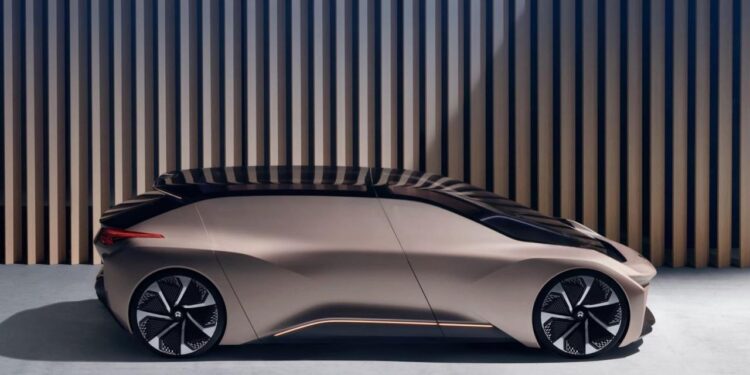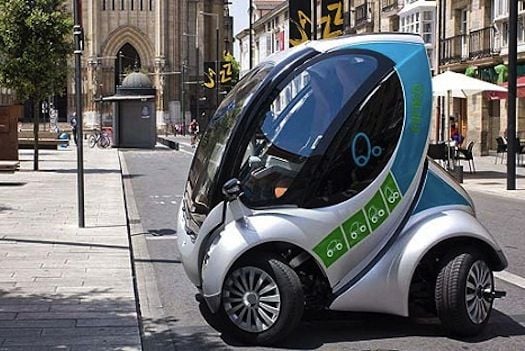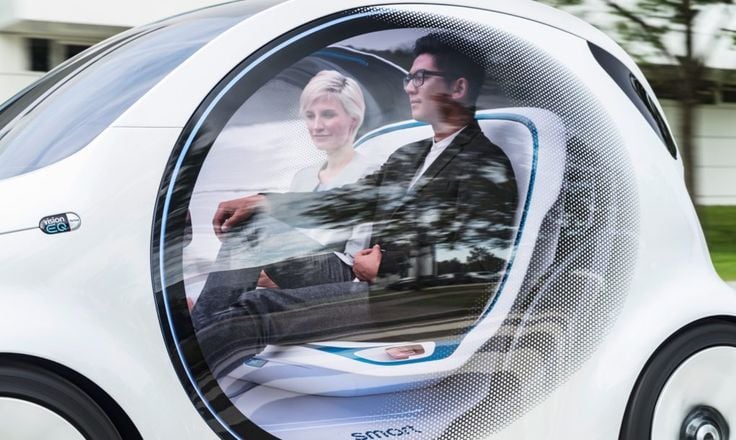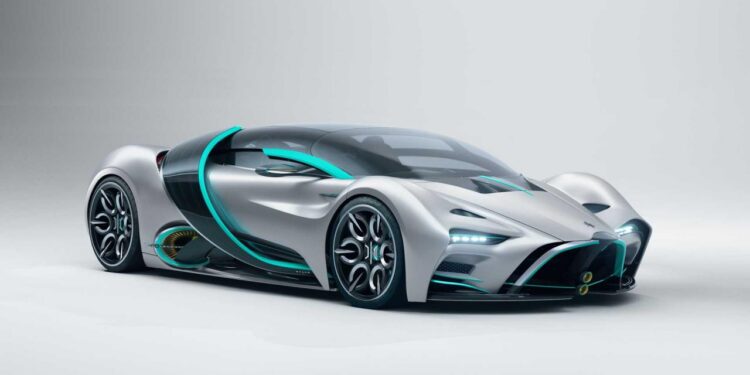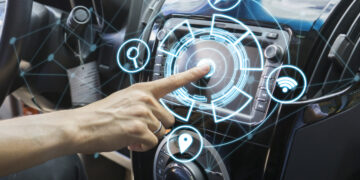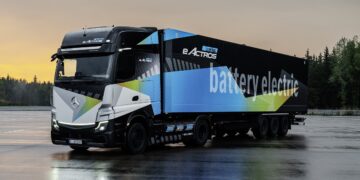The modern transportation landscape is rapidly evolving, and at the forefront of this revolution are smart cars. These technologically advanced vehicles are not only redefining daily commutes but are also reshaping how we interact with urban mobility. Gone are the days when automobiles were mere mechanical devices; today’s smart cars integrate cutting-edge technologies such as artificial intelligence, advanced driver assistance systems (ADAS), connectivity features, and sustainable powertrains. This article explores the transformative impact of smart cars on everyday commuting, delves into the technologies that drive them, and examines the challenges and future prospects of this dynamic industry.
Over the past decade, the surge in digital innovation has dramatically altered the way vehicles function. Smart cars represent a convergence of automotive engineering and information technology, offering enhanced safety, improved efficiency, and a host of intelligent features that elevate the driving experience. From optimizing traffic flow to reducing emissions, these vehicles are poised to change not only how we travel but also how cities are planned and managed.
This comprehensive article covers the evolution of smart cars, their key technologies, benefits for commuters, environmental and economic impacts, connectivity, autonomous driving trends, challenges, global case studies, and future innovations. Whether you are a daily commuter, an automotive enthusiast, or an industry professional, understanding the smart car phenomenon is essential for navigating the future of transportation.
The Evolution of Smart Cars
The journey of smart cars began with incremental advancements in automotive technology. Early vehicles featured basic electronic controls, but as consumer demand and environmental concerns grew, so did the need for smarter, safer, and more efficient automobiles.
A. Early Innovations and Milestones
Historically, vehicles were designed with a focus on mechanical performance and durability. Over time, manufacturers started incorporating electronic systems for engine management and fuel efficiency. The evolution can be summarized as follows:
A. Introduction of Electronic Fuel Injection: Improved engine performance and efficiency.
B. Adoption of Anti-lock Braking Systems (ABS): Enhanced vehicle safety during emergency braking.
C. Development of Basic Infotainment Systems: Early integration of radio and navigation features.
D. Emergence of Onboard Diagnostics (OBD): Providing real-time data on vehicle performance.
B. The Digital Transformation
The advent of the internet, mobile technology, and artificial intelligence ushered in a new era for the automotive industry. Manufacturers began to view cars as interconnected devices capable of real-time data processing and communication. This digital transformation led to the creation of smart cars, which incorporate:
A. Advanced Sensors: Such as cameras, radars, and LiDAR to monitor the environment.
B. High-Speed Data Processing Units: To analyze sensor data instantaneously.
C. Integrated Connectivity: Allowing vehicles to communicate with each other and with infrastructure.
The evolution from conventional cars to smart cars is marked by a transition from isolated systems to a fully connected ecosystem, where vehicles are part of a larger digital network.
Key Technologies in Smart Cars
Smart cars are powered by a range of innovative technologies that work together to enhance safety, performance, and convenience. These technologies are not only transforming how we drive but are also setting new standards for the automotive industry.
A. Artificial Intelligence and Machine Learning
At the heart of smart car technology is artificial intelligence (AI), which enables vehicles to process and interpret vast amounts of data. Machine learning algorithms are deployed to:
A. Recognize Traffic Patterns: By analyzing historical and real-time data to predict congestion.
B. Identify Road Hazards: Detecting obstacles, pedestrians, and other vehicles to prevent accidents.
C. Enhance Autonomous Navigation: Continuously learning from driving experiences to improve route optimization.
The integration of AI allows smart cars to make informed decisions, leading to safer and more efficient travel.
B. Advanced Driver Assistance Systems (ADAS)
ADAS technologies are critical for improving driver safety and reducing human error. These systems include features such as:
A. Adaptive Cruise Control (ACC): Automatically adjusts the vehicle’s speed to maintain a safe distance from other cars.
B. Lane Departure Warning (LDW): Alerts drivers when they unintentionally drift out of their lane.
C. Automatic Emergency Braking (AEB): Initiates braking when a potential collision is detected.
D. Blind Spot Monitoring (BSM): Provides warnings about vehicles in adjacent lanes.
E. Traffic Sign Recognition: Identifies and interprets road signs to inform drivers of speed limits and other regulations.
These assistance systems contribute significantly to reducing accidents and enhancing overall road safety.
C. Connectivity and Internet of Things (IoT)
Connectivity is a cornerstone of smart car technology, transforming vehicles into integral parts of the digital ecosystem. The Internet of Things (IoT) facilitates:
A. Vehicle-to-Vehicle (V2V) Communication: Enabling cars to share information such as speed, location, and road conditions.
B. Vehicle-to-Infrastructure (V2I) Integration: Allowing communication between vehicles and traffic management systems, traffic lights, and road sensors.
C. Remote Diagnostics and Maintenance: Providing real-time data to service centers for proactive maintenance.
D. Enhanced Infotainment: Offering seamless connectivity with smartphones, streaming services, and navigation apps.
These connectivity features not only improve the driving experience but also pave the way for future innovations in autonomous driving and smart city infrastructure.
D. Sustainable Powertrains
Smart cars are increasingly being designed with sustainability in mind. Innovations in powertrain technology include:
A. Electric Vehicles (EVs): Powered by advanced battery systems that offer zero-emission driving.
B. Hybrid Systems: Combining internal combustion engines with electric motors to optimize fuel efficiency.
C. Hydrogen Fuel Cells: Providing an alternative clean energy source with fast refueling times.
D. Regenerative Braking: Capturing energy during braking to extend battery life and improve overall efficiency.
These sustainable powertrains contribute to reducing the environmental impact of daily commuting and support global initiatives aimed at lowering carbon emissions.
Benefits for Daily Commuters
The adoption of smart cars brings numerous advantages that directly enhance the daily commuting experience. These benefits range from improved safety and efficiency to environmental sustainability and cost savings.
A. Enhanced Safety
Smart cars are equipped with advanced safety features that significantly reduce the likelihood of accidents. Key safety benefits include:
A. Reduced Human Error: AI-driven systems assist in preventing common driving mistakes.
B. Real-Time Hazard Detection: Continuous monitoring of the environment allows for prompt responses to potential dangers.
C. Accident Prevention Technologies: Features such as automatic emergency braking and lane-keeping assistance help avoid collisions.
D. Improved Visibility: Advanced lighting systems and sensor-based monitoring provide better visibility in adverse conditions.
B. Increased Efficiency and Convenience
Smart cars streamline the commuting process by offering features that enhance efficiency and reduce travel time. These advantages include:
A. Optimized Route Planning: AI algorithms suggest the fastest and most fuel-efficient routes.
B. Reduced Traffic Congestion: Connectivity between vehicles and traffic management systems helps alleviate bottlenecks.
C. Seamless Connectivity: Integration with mobile devices ensures that drivers can access important information without distraction.
D. Hands-Free Operation: Voice-activated controls allow drivers to perform tasks while keeping their hands on the wheel.
C. Environmental Sustainability
The push toward sustainable transportation is one of the most compelling benefits of smart car technology. By embracing eco-friendly powertrains and efficient driving systems, smart cars contribute to:
A. Lower Emissions: Electric and hybrid vehicles emit fewer pollutants, improving air quality.
B. Energy Efficiency: Advanced power management systems optimize energy use, reducing overall consumption.
C. Sustainable Materials: Modern vehicles increasingly incorporate recyclable and eco-friendly materials.
D. Reduced Dependence on Fossil Fuels: Innovations in alternative energy sources help decrease reliance on traditional fuel sources.
D. Economic Advantages
Smart cars offer several economic benefits for both individuals and society as a whole. These include:
A. Lower Operating Costs: Electric vehicles and hybrids typically have reduced maintenance and fuel costs.
B. Increased Resale Value: Advanced technology and high demand for smart cars contribute to better resale prices.
C. Incentives and Tax Breaks: Many governments offer subsidies and tax incentives to promote the adoption of eco-friendly vehicles.
D. Reduced Insurance Premiums: Enhanced safety features can lead to lower insurance rates.
The Role of Connectivity and IoT in Smart Cars
Connectivity and the Internet of Things (IoT) are central to the functionality of smart cars. These technologies transform vehicles from isolated machines into interconnected hubs that communicate with their surroundings.
A. Vehicle-to-Vehicle (V2V) Communication
V2V communication enables vehicles to exchange critical information in real time. This technology facilitates:
A. Collision Avoidance: Sharing data on speed and direction to prevent accidents.
B. Traffic Flow Optimization: Coordinated driving patterns that reduce congestion.
C. Enhanced Navigation: Real-time updates that inform drivers of hazards and alternative routes.
B. Vehicle-to-Infrastructure (V2I) Integration
Smart cars interact seamlessly with infrastructure components, creating a cohesive transportation network. V2I systems enable:
A. Smart Traffic Signals: Adaptive traffic lights that respond to real-time traffic conditions.
B. Efficient Road Maintenance: Sensors that monitor road conditions and alert authorities to maintenance needs.
C. Improved Parking Management: Systems that guide drivers to available parking spaces.
C. Remote Monitoring and Diagnostics
With connectivity, smart cars can perform remote diagnostics and self-monitoring, leading to proactive maintenance. This capability includes:
A. Real-Time Performance Data: Continuous monitoring of engine and system performance.
B. Predictive Maintenance Alerts: Notifications about potential issues before they become serious.
C. Enhanced Customer Support: Remote troubleshooting and software updates delivered over-the-air.
Autonomous Driving: The Future of Commuting
One of the most exciting prospects of smart car technology is the development of autonomous driving systems. While full self-driving capabilities are still in progress, many modern vehicles incorporate features that pave the way toward complete automation.
A. Levels of Autonomy
Autonomous driving is categorized into different levels based on the extent of automation. These levels include:
A. Level 1 – Driver Assistance: Basic features such as adaptive cruise control and lane-keeping assist.
B. Level 2 – Partial Automation: Systems that handle steering and acceleration, but still require driver oversight.
C. Level 3 – Conditional Automation: Vehicles that can manage most driving tasks in certain conditions, with the driver ready to intervene.
D. Level 4 – High Automation: Cars capable of self-driving in most situations without human intervention.
E. Level 5 – Full Automation: The ultimate goal, where vehicles operate independently in all conditions.
B. Benefits of Autonomous Driving
The progression toward autonomous driving offers several key advantages for commuters:
A. Enhanced Safety: Reduction in human error leads to fewer accidents.
B. Increased Productivity: Commuters can utilize travel time for work or leisure.
C. Improved Traffic Flow: Autonomous vehicles can communicate and coordinate, reducing congestion.
D. Accessibility: Self-driving cars have the potential to provide mobility for individuals unable to drive.
C. Regulatory and Ethical Considerations
The road to fully autonomous vehicles is not without challenges. Key concerns include:
A. Legal Frameworks: Establishing comprehensive laws that govern autonomous driving.
B. Ethical Dilemmas: Programming vehicles to make decisions in critical situations.
C. Data Privacy: Ensuring the security of the vast amounts of data generated by autonomous systems.
D. Public Acceptance: Gaining trust from the general public in automated systems.
Challenges Facing Smart Car Adoption
While the benefits of smart cars are extensive, several challenges must be addressed to ensure widespread adoption.
A. Cybersecurity Concerns
As vehicles become increasingly connected, the risk of cyberattacks grows. Manufacturers must implement robust security measures to protect:
A. Sensitive Data: Ensuring that personal and vehicle data remains secure.
B. Communication Networks: Safeguarding V2V and V2I communications from interference.
C. System Integrity: Preventing unauthorized access to critical vehicle functions.
B. Infrastructure Limitations
The success of smart car technology is closely linked to the development of supporting infrastructure. Current challenges include:
A. Charging Stations: Adequate and widespread networks for electric vehicles.
B. Maintenance Facilities: Technicians trained to service high-tech systems.
C. Smart City Integration: The need for municipalities to adopt technologies that support connected vehicles.
C. High Development Costs
The integration of advanced technologies in vehicles comes with significant research and development expenses. This can translate to:
A. Higher Purchase Prices: Initially limiting access to the latest smart car models.
B. Investment in New Technologies: Continuous innovation requires substantial financial commitment.
C. Economic Barriers: Ensuring that advancements benefit a wide range of consumers.
D. Regulatory Hurdles
Government regulations must keep pace with technological advancements. The challenges include:
A. Updating Standards: Revising safety and performance standards for new technologies.
B. Coordinating Across Jurisdictions: Ensuring consistency in regulations globally.
C. Public Policy: Balancing innovation with consumer protection.
Global Case Studies and Industry Leaders
Numerous companies around the world are pioneering smart car technologies, each contributing to the evolution of daily commuting. Examining a few key players helps illustrate the broader impact on the industry.
A. Pioneering Electric Vehicles
Companies such as Tesla have been instrumental in popularizing electric vehicles (EVs). Their innovations include:
A. Long-Range Batteries: Enabling extended travel distances without frequent charging.
B. Over-the-Air Updates: Continuously improving vehicle performance and safety.
C. Integrated Autopilot: Advanced features that lay the groundwork for full autonomy.
B. Advancements in Autonomous Driving
Waymo, a subsidiary of Alphabet Inc., is leading the charge in autonomous vehicle technology. Their research and development efforts focus on:
A. Safety-First Designs: Prioritizing the reduction of accidents through automation.
B. Real-World Testing: Extensive trials in diverse environments to ensure reliability.
C. Collaborative Innovations: Partnering with municipalities and other tech companies to enhance infrastructure.
C. Global Collaborations and Smart City Initiatives
In Europe and Asia, smart city projects are integrating smart car technologies into broader urban planning. These initiatives focus on:
A. V2X Communication Networks: Establishing robust systems for vehicle and infrastructure connectivity.
B. Sustainable Urban Mobility: Promoting shared mobility and reducing carbon footprints.
C. Public-Private Partnerships: Collaborating across sectors to fund and implement technological upgrades.
Impact on Urban Planning and Commuting Culture
The proliferation of smart cars is not only changing individual commutes but also reshaping the fabric of urban environments. This transformation influences several aspects of city planning and community life.
A. Redesigning Road Infrastructure
Smart cars necessitate the modernization of road networks. Urban planners are now considering:
A. Dedicated Lanes for Autonomous Vehicles: Reducing congestion and enhancing safety.
B. Smart Traffic Systems: Integrating sensors and adaptive signals for efficient traffic management.
C. Sustainable Urban Design: Prioritizing green spaces and eco-friendly transit options.
B. Shifting Commute Patterns
With the introduction of smart cars, the dynamics of daily commuting are evolving. Key shifts include:
A. Reduced Travel Stress: Automation and intelligent navigation minimize driver fatigue.
B. Flexible Commute Options: Car-sharing and ride-hailing services are enhanced by smart technology.
C. Enhanced Productivity: Commuters can utilize travel time more effectively with autonomous driving features.
C. Societal and Environmental Benefits
Smart cars offer significant advantages beyond the individual level, impacting society and the environment:
A. Lower Emissions: Widespread adoption of electric and hybrid smart cars contributes to improved air quality.
B. Economic Growth: The smart car industry creates jobs and stimulates technological innovation.
C. Community Connectivity: Enhanced transportation networks promote accessibility and social integration.
The Road Ahead: Future Innovations and Trends
As technology continues to advance, the capabilities of smart cars will only expand. The future of commuting promises even more transformative innovations, including:
A. Integration of Augmented Reality
Augmented reality (AR) could soon become a standard feature in smart car dashboards, offering:
A. Real-Time Navigation Overlays: Displaying directions and hazard alerts directly on the windshield.
B. Enhanced Driver Information: Providing contextual data about road conditions, weather, and nearby points of interest.
C. Interactive User Interfaces: Allowing seamless interaction between drivers and vehicle systems.
B. Quantum Computing and Data Processing
The application of quantum computing in automotive technology may revolutionize data processing, leading to:
A. Faster Decision-Making: Ultra-fast processing of complex driving scenarios.
B. Improved Machine Learning Models: More accurate predictions and hazard assessments.
C. Advanced Cybersecurity Protocols: Enhanced protection against emerging digital threats.
C. Expanded Connectivity and Smart Cities
The growth of smart city initiatives will further integrate smart cars into urban life. Expected developments include:
A. 5G and Beyond: Ultra-fast network speeds for uninterrupted connectivity.
B. Comprehensive V2X Networks: Fully integrated systems that connect vehicles, infrastructure, and even pedestrians.
C. Data-Driven Urban Planning: Utilizing real-time data from smart cars to optimize city layouts and transportation systems.
D. Personalization and Customization
Future smart cars are likely to offer highly personalized experiences for drivers and passengers, featuring:
A. Tailored User Interfaces: Customizable dashboards and infotainment options.
B. Adaptive Comfort Settings: Automatically adjusting climate control, seating, and entertainment based on user preferences.
C. Behavioral Learning: Vehicles that learn individual driving habits to enhance safety and efficiency.
Conclusion
The revolution of smart cars is transforming the way we commute on a daily basis. With their integration of advanced technologies, enhanced connectivity, and sustainable powertrains, smart cars are not only making our journeys safer and more efficient but are also contributing to a cleaner and more connected urban environment. As these vehicles become increasingly prevalent, they promise to redefine daily commutes, stimulate economic growth, and drive innovation in transportation and urban planning.
From autonomous driving to AI-powered safety systems, the future of commuting is bright. While challenges such as cybersecurity, infrastructure development, and regulatory adaptation remain, the benefits of smart car technology far outweigh the hurdles. The ongoing evolution of smart cars will continue to shape our cities and the way we live, paving the road to a future where commuting is not a burden but a seamless, efficient, and enjoyable part of daily life.
As we look ahead, it is clear that smart cars will play a pivotal role in the transformation of global transportation. Their ability to integrate with smart city initiatives, optimize traffic flow, and enhance personal mobility will drive the next phase of urban innovation. For commuters, manufacturers, and policymakers alike, embracing these changes is essential to ensuring that the road ahead is one of progress, sustainability, and unparalleled convenience.

